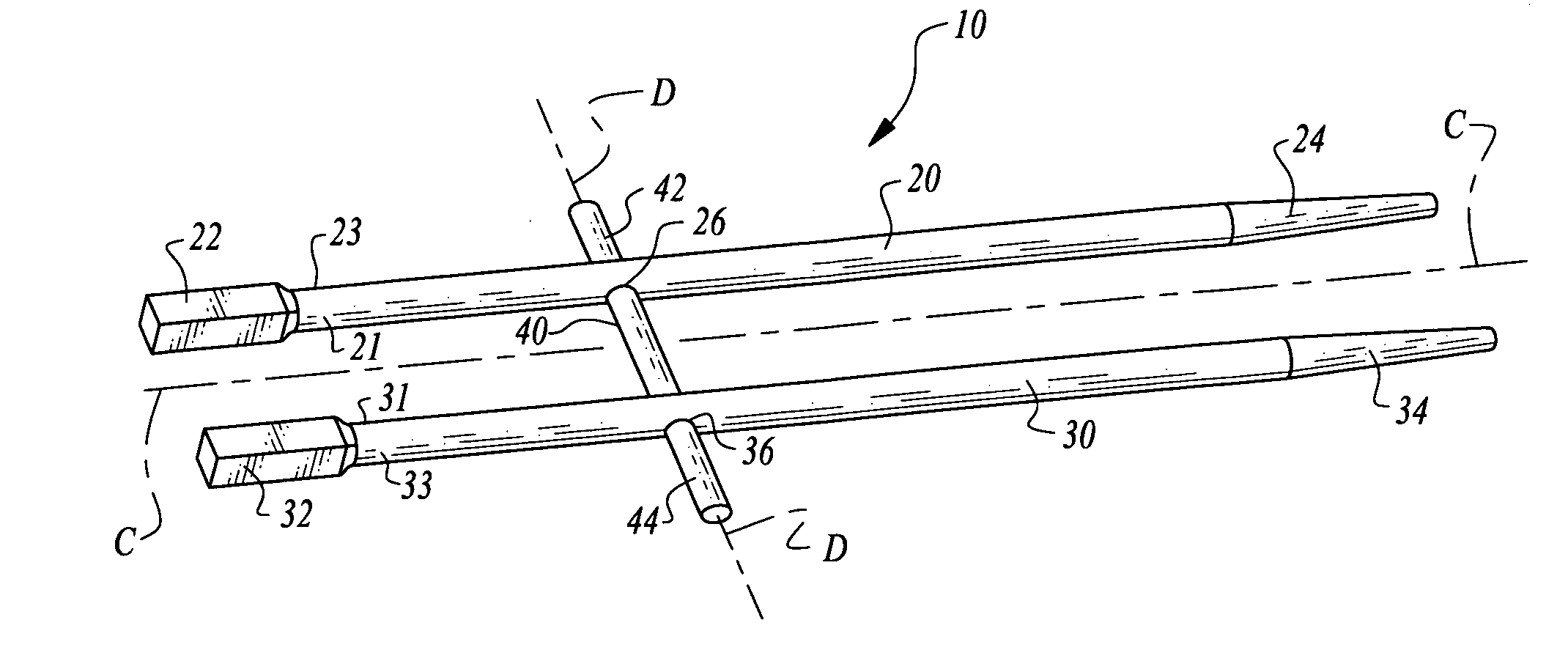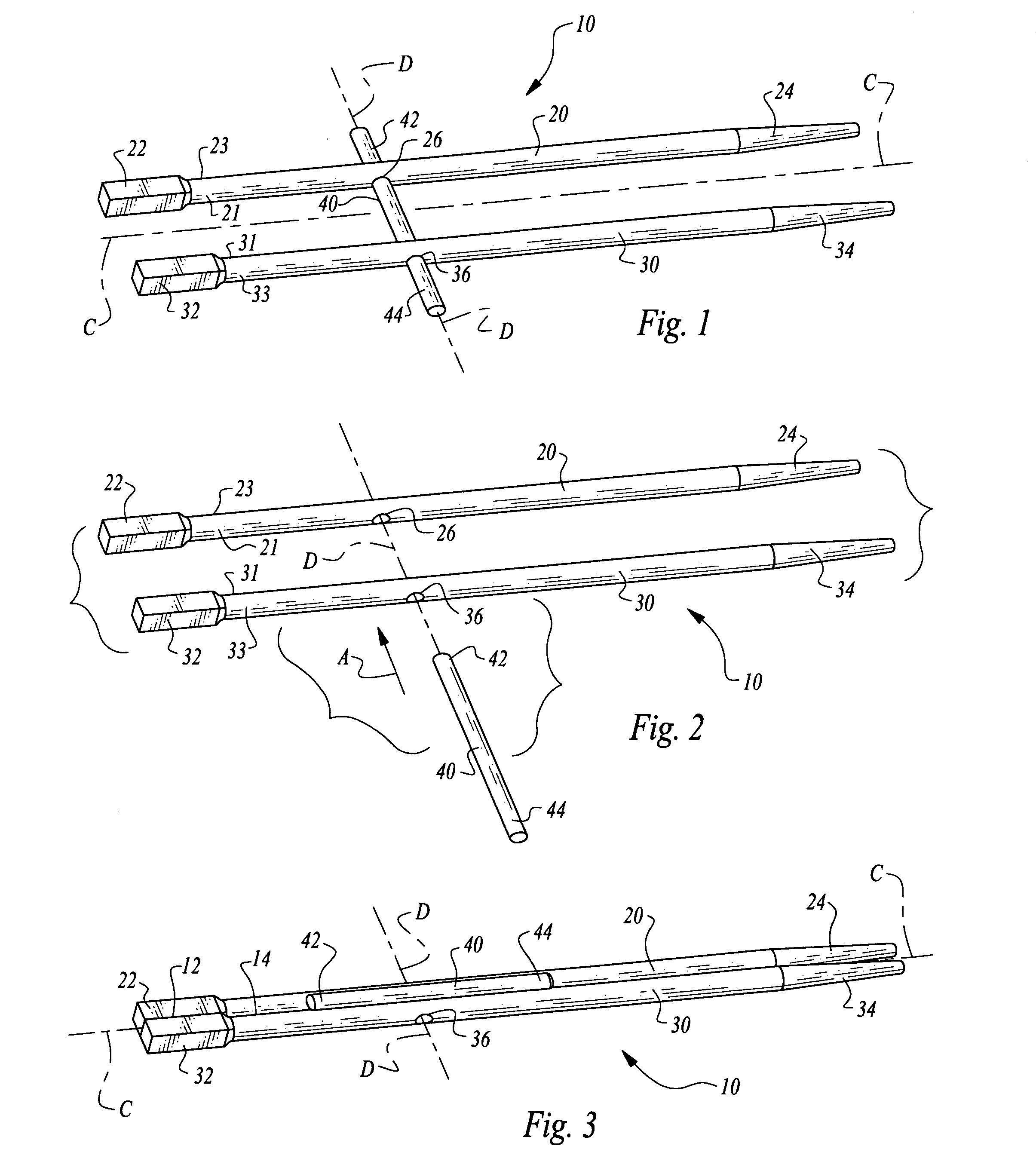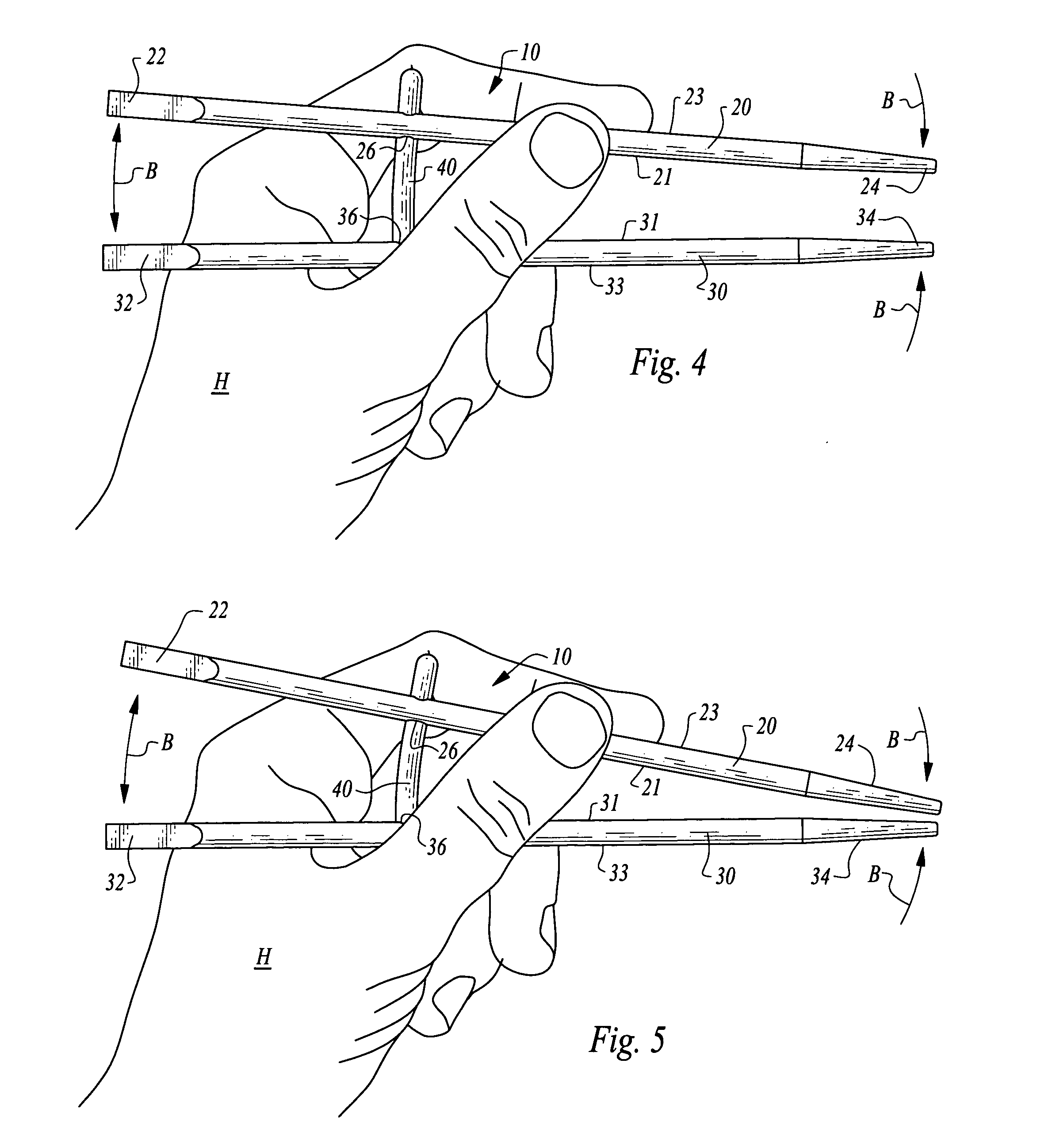Training chopsticks
a technology of chopsticks and chopsticks, which is applied in the field of chopsticks, can solve the problems of difficulty in learning to use chopsticks, inability to meet the needs of users, and difficulty in adjusting the grip, etc., and achieves the effect of simple manufacturing, reliable and low-cost fashion
- Summary
- Abstract
- Description
- Claims
- Application Information
AI Technical Summary
Benefits of technology
Problems solved by technology
Method used
Image
Examples
Embodiment Construction
[0036]Referring to the drawings, wherein like reference numerals represent like parts throughout the various drawing figures, reference numeral 10 is directed to a chopsticks assembly (FIG. 1) which allows a pair of chopsticks 20, 30 to be held together, maintained within a common plane without skewing relative to each other, and biasing the chopsticks toward an open orientation, to simplify use of the chopsticks assembly 10. The chopsticks assembly 10 exhibits an exceptionally simple design to minimize complexity of manufacture and cost of materials, and while maintaining biodegradability of materials forming the chopsticks assembly 10. The chopsticks assembly 10 maintains typical handling characteristics to facilitate training in the use of chopsticks (FIGS. 4 and 5).
[0037]In essence, and with particular reference to FIGS. 1-3, basic details of the chopsticks assembly 10 are described, according to an exemplary embodiment depicted in the figures herein. The assembly 10 includes a ...
PUM
 Login to View More
Login to View More Abstract
Description
Claims
Application Information
 Login to View More
Login to View More - R&D
- Intellectual Property
- Life Sciences
- Materials
- Tech Scout
- Unparalleled Data Quality
- Higher Quality Content
- 60% Fewer Hallucinations
Browse by: Latest US Patents, China's latest patents, Technical Efficacy Thesaurus, Application Domain, Technology Topic, Popular Technical Reports.
© 2025 PatSnap. All rights reserved.Legal|Privacy policy|Modern Slavery Act Transparency Statement|Sitemap|About US| Contact US: help@patsnap.com



